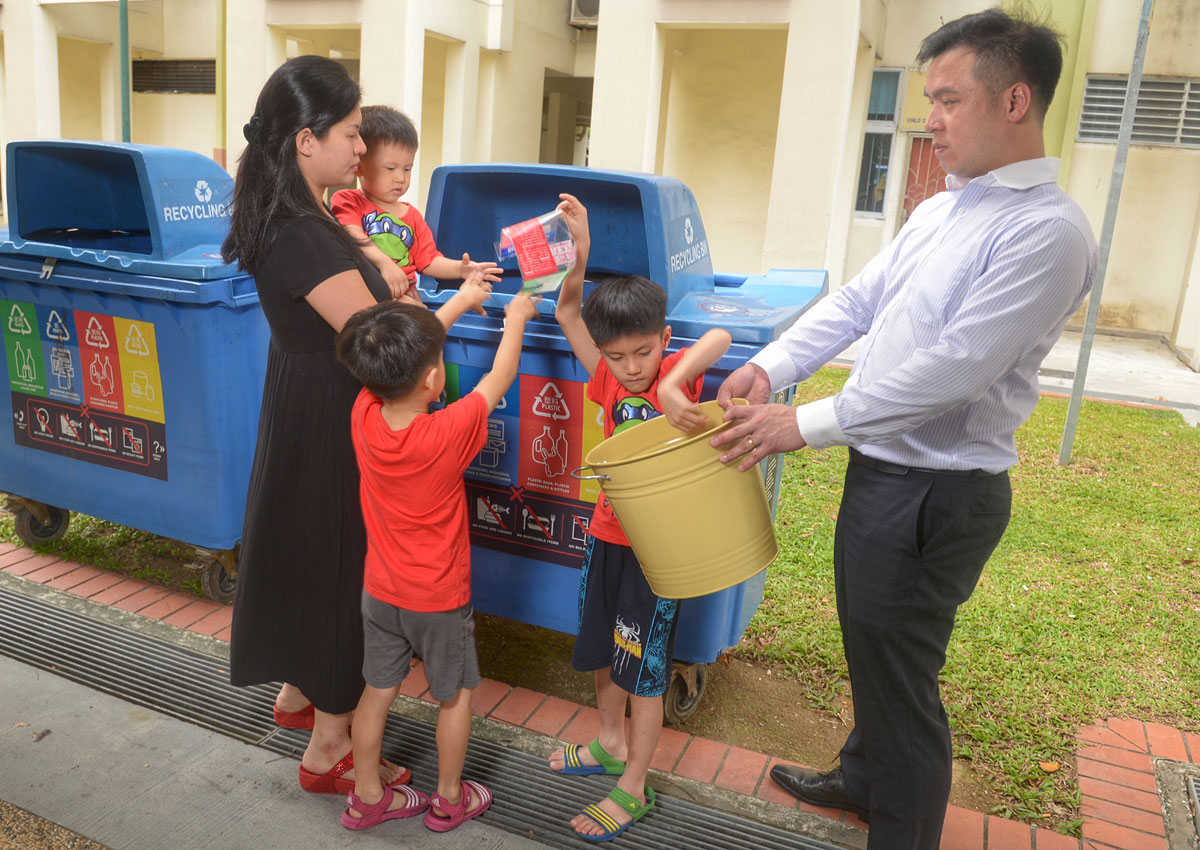One of the family rules found on the refrigerator in the home of Ms June Lim reads: “Anything that can be reused or recycled cannot be thrown away.”
She and her family do not pay lip service to being green. The 31-year- old mother of three and her husband have a recycling bin in their three-room HDB flat in Bedok for used paper, plastic, metal and glass.
Ms Lim would also take some other kinds of items – such as electronic products, ink cartridges and lightbulbs – to designated recycling points in other parts of the island. Unwanted clothes and household items are given away.
From the age of two, Ms Lim’s sons – now aged eight, six and three – have been taught to throw unwanted items, starting with plastic and paper packaging, into the recycling bin.
Over the past three years, she has been an active member on the sgfreecycle Facebook group, which aims to reduce waste by connecting people who are giving things away to those who are looking for those things. She is also a member of Singapore Glove Project, where people meet to pick up litter on their walks or jogs.
Ms Lim, a freelance actress and emcee, says she was brought up by her mother to be frugal and the habit stuck. A YouTube video she watched a few years ago about seabirds dying after ingesting plastic from the sea also left an impression on her.
“It made me want to do my part for the environment,” she says.
But she and her family appear to be an exception to the norm among households here. Domestic waste, mostly from households, made up 2.1 million tonnes out of the 7.5 million tonnes of waste generated in 2014. But while the overall recycling rate of all types of waste is around 60 per cent, only 19 per cent of domestic waste gets a new life.
Mr Eugene Tay, founder of environmental group Zero Waste SG, believes that few households recycle because it is convenient for residents to just throw their waste down rubbish chutes.
He says: “They might not know where their waste ends up or understand the need to recycle. Also, residents pay a fixed waste disposal fee regardless of the amount they throw away.”
But families have a role to play in boosting the recycling rate here.
Mr Tay says that as the top three types of waste in Singapore are plastics, food and paper, families can start by minimising these types of waste in the first place.
To reduce plastic waste, they can buy products with less plastic packaging and avoid using takeaway disposable containers and cutlery.
To avoid buying too much food, families can draw up a shopping list of what food to buy before they go shopping. They should also store their food properly to minimise spoilage, and keep and cook any leftover food.
To reduce paper waste, Mr Tay says families can switch to online bills and statements, use cloth for cleaning instead of paper towels, and recycle paper.
For Ms Agatha Lee, 42, and her husband, practising the three Rs of reduce, reuse and recycle is a no-brainer. She says: “We don’t want a home full of things we don’t need.”
The family keep their food waste to a minimum, use recyclable shopping bags and repair or upcycle old clothes.
Their 11-year-old son knows how to sew and has made new shorts out of old trousers. He also knows how to replace the elastic band in his shorts when it is stretched loose.
Ms Lee, who also runs an environmental website, Green Issues by Agy, says: “Practising the three Rs also saves money and the Earth.”
leawee@sph.com.sg

This article was first published on April 3, 2016.
Get a copy of The Straits Times or go to straitstimes.com for more stories.






